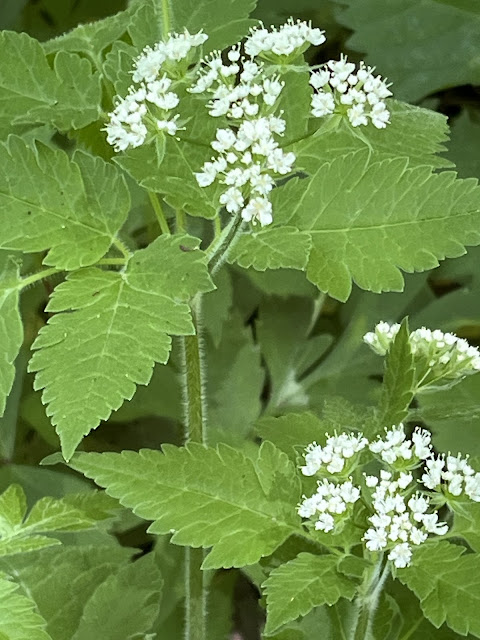Smooth Sweet Cicely
Smooth sweet cicely (Osmorhiza glabrata) is a native, perennial wildflower in Wisconsin, typically reaching heights of one to three feet. It produces small, white flowers about 1/8 inch wide, which are arranged in flat clusters (umbels) at the top of the plant and along branching stems. Each flower consists of five white petals, five white-tipped stamens, and two elongated white styles that exceed the length of the petals. The leaves are lush, fern-like, and compound, measuring three to six inches in length. They are divided into three parts, with each section further subdivided into smaller segments, creating an intricate and delicate appearance. This plant thrives in rich woods and wooded slopes, preferring moist, well-drained soil with shade to partial shade, and it serves as an important food source for pollinators such as bees, flies, wasps, and moths.
Smooth sweet cicely favors soil that is neutral to slightly alkaline, though it can tolerate a pH range of 6.0 to 7.0. Consistent moisture is crucial for its health, but excessive wetness should be avoided. It propagates mainly through seeds, which take anywhere from 14 to 30 days to germinate depending on soil conditions. Division of established plants is another effective propagation method, typically performed in early spring or fall. While stem cuttings are sometimes used for propagation, they are far less reliable than seeds or division. When planting, seeds should be placed one to two inches deep and spaced 12 to 18 inches apart to allow for proper growth and airflow. The plant has a lifespan of three to five years, making it a dependable addition to gardens where its delicate, anise-like fragrance and medicinal qualities can be appreciated. Light fertilization in early spring promotes healthy development, and its adaptability to shaded landscapes makes it a valuable choice for naturalistic plantings and pollinator support. (LS)
